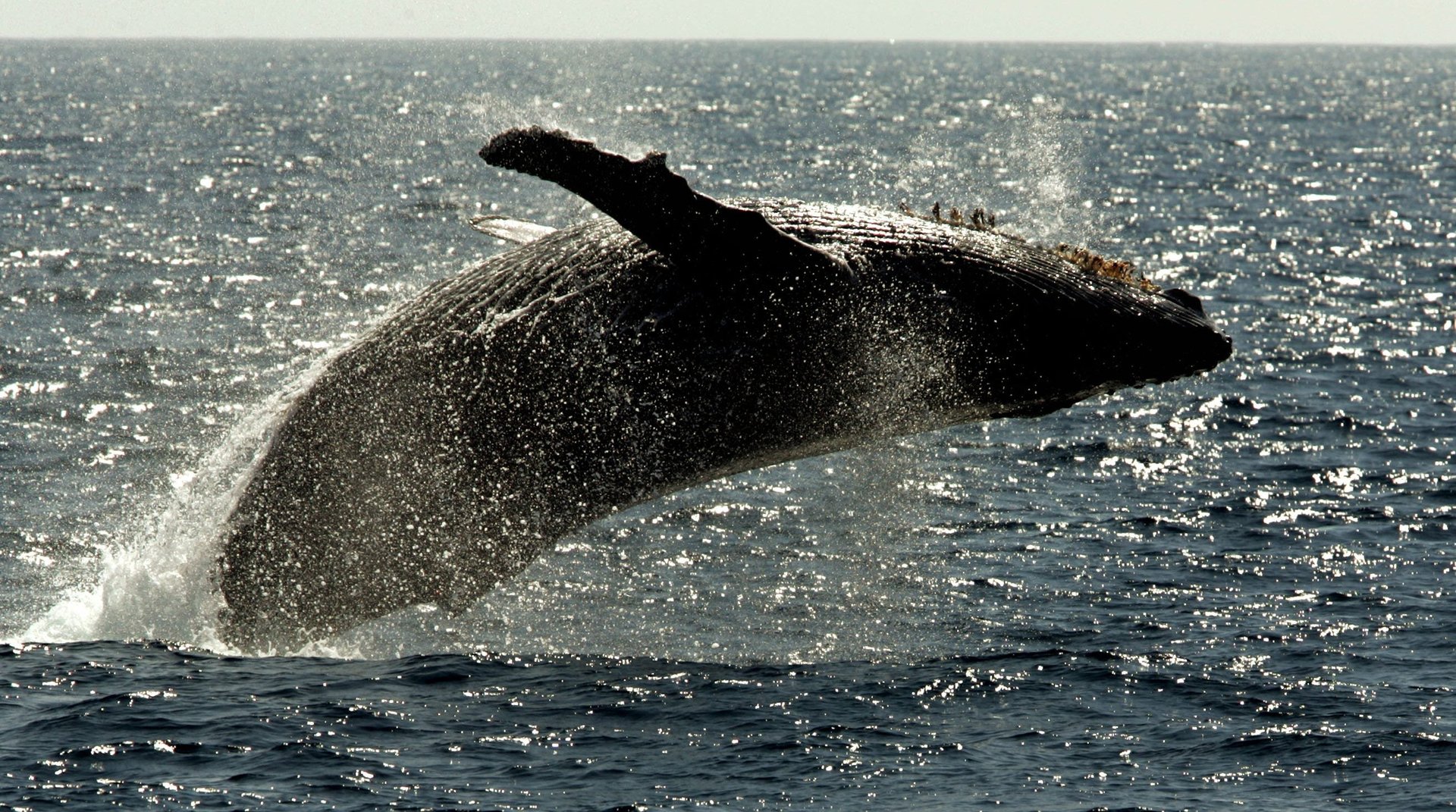Humpback whales have a unique weapon in their fight against predatory orcas: language
Marine creatures may not seem like big talkers, but it turns out that humpback whale mothers have a secret language reserved only for their young, an intimate tongue that keeps calves safe.


Marine creatures may not seem like big talkers, but it turns out that humpback whale mothers have a secret language reserved only for their young, an intimate tongue that keeps calves safe.
A new study of humpback whales, published in Functional Ecology on April 27, shows that mother and baby humpback whales have a quiet language that they use to communicate. It keeps calves safe from predators, such as killer whales, and can’t be easily overheard by competitors for mom’s attention, report the researchers from the University of Aarhus in Denmark.
The intimate language of mother humpbacks and their young, which minimizes eavesdropping but maximizes safety, was recorded by tagging moms and their baby calves with multi-sensor data in the waters of Exmouth Gulf in Western Australia. Researchers previously knew that humpback moms and their calves communicated using special sounds. But getting close to them is difficult, and vessels in the waters disturb natural behavior, making any data collected somewhat suspect. By tagging the creatures with sensors instead of trying to approach them, the researchers were able to record several months worth of sounds without any impact on the natural patterns of the humpbacks.
They discovered that the communication is much more extensive than was imagined previously, and probably just part of the picture. Mothers and babies used very weak tonal and grunting sounds while diving, an intimate and quiet tongue, but researchers theorize that they are also using other cues, not just acoustics, to initiate feeding. In any case, they believe the intimate language helps humpbacks moms keep their babies close for feeding and helps to guide the young while they swim in their mothers’ slipstream, all without drawing too much attention from unwanted eavesdroppers.
Chatter can attract predators, as well as male humpback whale suitors, both of which represent a threat to calves. Eavesdroppers of the killer whale variety are obviously problematic because they prey on humpbacks. But even fellow humpbacks, like male whale suitors, can harm the calves by distracting mothers from feeding duties with wooing. The researchers believe that the weak sounds shared between mothers and calves can’t be heard by others and are designed for secret exchange.
The study provides more insight on whale mother and calf communication than ever before, and will help to illuminate conservation efforts. Its release happened to coincide with whale drama in other waters. Humpbacks were seen defending gray whales from a pod of killer orcas in the Monterey Bay in California on April 28.
It’s not an unusual encounter, but humpbacks are considered unusual because, for reasons unknown to marine life researchers, they defend other creatures when threatened by common predators. It doesn’t appear to be a case of mistaken identity—humpbacks seem to have altruistic intentions.
In over 100 interactions between humpbacks and orcas recorded by researchers in the last 60 years, humpbacks have come to the rescue of other creatures almost 90% of the time. Many humpbacks involved in those defenses bore scars from killer whales—so it may be that they recall their own painful past encounters, according to researchers, or it may be that humpbacks respond to orca sounds, imagining that they are about to defend their kind, then stick around to fight anyway. For whatever reason, it is clear that these whales consistently come to the rescue of seals, sea lions, porpoises, dolphins and other marine mammals.